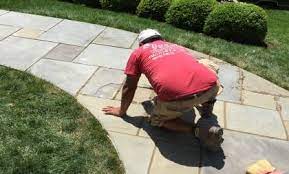If you own a chimney then you know how expensive it is to hire a chimney company Short Hills to do repairs from time to time and sweep your chimney. All this is done to improve the efficiency of your chimney and reduce the risks of chimney fires. Even though chimneys are designed to stop fires from spreading to your home and withstand high temperatures, they can fail if the creosote catches fire. Creosote is flammable and this means you do not want it building up in your chimney. A stray spark or extremely high temperatures in your chimney can ignite creosote. Chimney fires can be fueled by creosote and get up to over 2000 degrees Fahrenheit and this can cause the liner of your chimney to crack and allow flames to spread quickly to your home.
Creosote definition
Smoke from burning wood fire contains gases, wood particles and other compounds. As these byproducts of combustion cool down on their way up your chimney, they easily condense along the walls of your chimney. The condensation is what the creosote becomes. This material is extremely flammable and as it builds up in your chimney, it passes through three main stages. Each stage is more difficult to remove than the previous stage.
The first creosote stage
When creosote starts forming in the first stage, it is easy to remove because it is flaky. You can remove it yourself without hiring a chimney repairs company. Professionals can also remove it with a basic brush.
Second creosote stage
As more creosote builds up, it starts changing. It hardens and thickens into a glass-like and shiny compound that cannot be removed with a brush. The second stage requires professional removal and that is why you should hire a chimney sweep to do it for you. There are a lot of certified chimney sweeps that can be hired for this job.
Third creosote stage
When the creosote continues to build up, it moves on to the third stage. The third stage is a sticky and thick tar-like substance. At this point, it is the most flammable. It is a concentrated fuel. This stage of creosote also requires a professional to remove it. In most cases, professional chemicals will be used to remove third-grade creosote. In severe cases, it may be necessary to replace the chimney liner. You can prevent this by using the following tips.
Tips for minimizing creosote buildup
You should only burn seasoned wood. Greenwood is packed with moisture content that makes it hard to burn. It also produces black smoke filled with byproducts of combustion. Allowing wood to season or dry for at least 6 months helps it burn completely. You should never burn artificial logs as they produce more byproducts of combustion than regular wood.
Build clean and hot fires. Stacking wood with enough space in between the logs for proper circulation of oxygen will produce a cleaner and hotter burning fire. If you build efficient fires consistently, less creosote will build up in your chimney and this means less money spent on hiring a chimney company Short Hills.
